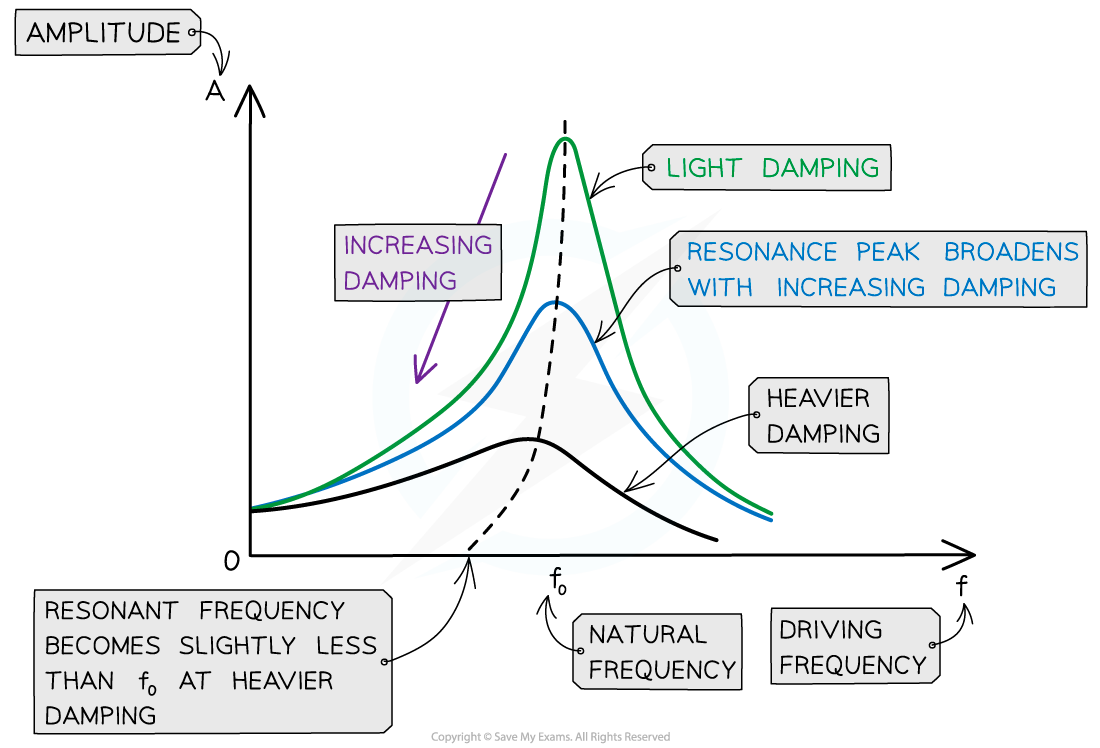Resonance (OCR A Level Physics): Revision Note
Exam code: H556
Resonance
The frequency of forced oscillations is referred to as the driving frequency, f, or the frequency of the applied force
All oscillating systems have a natural frequency, f0, this is defined as this is the frequency of an oscillation when the oscillating system is allowed to oscillate freely
Oscillating systems can exhibit a property known as resonance
When the driving frequency approaches the natural frequency of an oscillator, the system gains more energy from the driving force
Eventually, when they are equal, the oscillator vibrates with its maximum amplitude, this is resonance
Resonance is defined as:
When the frequency of the applied force to an oscillating system is equal to its natural frequency, the amplitude of the resulting oscillations increases significantly
For example, when a child is pushed on a swing:
The swing plus the child has a fixed natural frequency
A small push after each cycle increases the amplitude of the oscillations to swing the child higher. This frequency at which this push happens is the driving frequency
When the driving frequency is exactly equal to the natural frequency of the swing oscillations, resonance occurs
If the driving frequency does not quite match the natural frequency, the amplitude will increase but not to the same extent as when resonance is achieved
This is because, at resonance, energy is transferred from the driver to the oscillating system most efficiently
Therefore, at resonance, the system will be transferring the maximum kinetic energy possible
Amplitude-Frequency Graphs
A graph of driving frequency f against amplitude A of oscillations is called a resonance curve. It has the following key features:
When f < f0, the amplitude of oscillations increases
At the peak where f = f0, the amplitude is at its maximum. This is resonance
When f > f0, the amplitude of oscillations starts to decrease

The maximum amplitude of the oscillations occurs when the driving frequency is equal to the natural frequency of the oscillator
The Effects of Damping on Resonance
Damping reduces the amplitude of resonance vibrations
The height and shape of the resonance curve will therefore change slightly depending on the degree of damping
Note: the natural frequency f0 of the oscillator will remain the same
As the degree of damping is increased, the resonance graph is altered in the following ways:
The amplitude of resonance vibrations decrease, meaning the peak of the curve lowers
The resonance peak broadens
The resonance peak moves slightly to the left of the natural frequency when heavily damped
Therefore, damping reduced the sharpness of resonance and reduces the amplitude at resonant frequency

As damping is increased, resonance peak lowers, the curve broadens and moves slightly to the left

Unlock more, it's free!
Did this page help you?